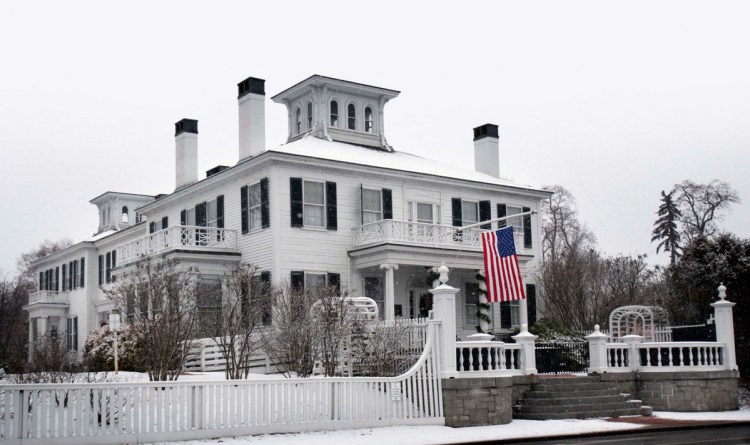The Blaine House is not just the building where the governor lives. It’s also a place where the chief executive can make a point.
So when then-Gov. Paul LePage wanted to promote the use of super-efficient electric heat pumps to a state that is overly reliant on imported oil, he bought two dozen units and had them installed in the 1833 mansion.
And after he moved out and his successor, Janet Mills, moved in, she promised there would soon be solar panels on the Blaine House roof.
It was a subtle jab at LePage, who made no secret about his opposition to wind and solar power. With both governors using the Blaine House as a showroom for their favorite technology, will we find out which one was right?
The answer will almost certainly be both of them. Switching to a highly efficient electric heating and cooling system has dramatically decreased the need to fire up the oil burner in the old house. A solar array is estimated to produce about half of the building’s electricity needs, which includes the use of the heat pumps. When both technologies are employed, the state will be paying less for electricity, even thought they are doing more with it. It’s the kind of choice many Mainers would like to make in their own homes if they could afford the initial investment.
PAYS FOR ITSELF
Mills’ plan should put to rest the notion that solar power is just for the rich. She may live in a mansion, but this shouldn’t cost the state anything.
The request for proposals sent out by the state is looking for a vendor who would install and maintain the solar panels in exchange for a commitment to buy solar power at a rate lower than the regular retail rate. The cost of the whole operation would be less than what the state would save on its electric bill (which was $11,292 last year). A lot of Mainers would take that deal if it were offered to them.
NOT ONLY FOR THE RICH
The idea that solar power is only for the rich is a carryover from the past, when the equipment was much more expensive than it is today. The cost of photovoltaic panels has dropped 99 percent in the last 40 years, and experts in the field don’t predict that trend to stop. Battery technology is also rapidly advancing and we are probably a breakthrough or two away from affordable storage, letting a homeowner or business collect power during the day and use it at night.
The city of Washington, D.C., is committed to installing solar panels on 6,000 homes a year in low-income neighborhoods to meet a renewable-power target. There are other ways to spread the benefit of renewable power.
Large-scale projects that deliver power during the summer demand peak would save money for all ratepayers. Cities and towns can lower the cost of operating municipal buildings and schools, taking pressure off the taxpayers. And people who live in apartments or other buildings on which you can’t install solar panels could reduce their costs by joining community solar farms that put power onto the grid. Putting solar panels on the Blaine House won’t accomplish all that, but it should send the message. Solar power is a good deal, and all Mainers should demand that the deal is available to them.
Send questions/comments to the editors.



Comments are no longer available on this story